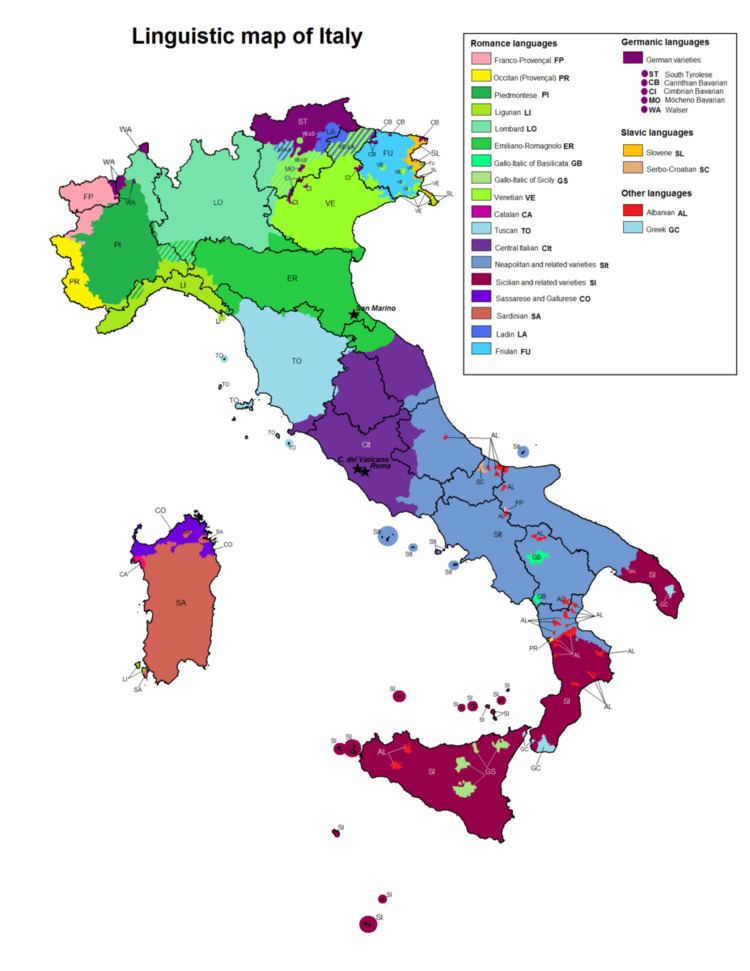Native to Northwest Italy Glottolog None | Native speakers 60,000 (2006) | |
 | ||
Language family Indo-EuropeanItalicRomanceItalo-WesternGallo-ItalicGallo-Italic of Sicily | ||
The Gallo-Italic of Sicily (Italian: Gallo-italico di Sicilia) is a group of Gallo-Italic languages found in approximately fourteen isolated communities in central-eastern Sicily. It forms a language island within the Sicilian language and dates back to migrations from Northern Italy during the time of Norman Roger I of Sicily, and which continued under his successors.
Contents
The towns that were populated by the new immigrants became known as the "Lombard communities" (or Oppida Lombardorum in Latin, cumuna lummardi in Sicilian). In truth, the colonizers, known as "Lombards of Sicily" were not all from today's Lombardy but most parts of Northern Italy, including the Piedmont, Liguria and Emilia—"Lombardy" being the name for the whole of Northern Italy in the Middle Ages. Apart from their geographic origin, the one common attribute that the colonizers had was that they brought with them their Gallo-Italic languages. These idioms were to add to the Gallic influence of the newly developing Sicilian (influences which also include Norman and Old Occitan) and have been influenced by Sicilian itself over the centuries, creating distinctive Gallo-Italic languages.
History
Although Roger I took 30 years to take complete control of Sicily (1061–91), by 1080 he had effective control over much of the island. In the course of this conquest, large parts of central Sicily became depopulated as Muslims either fled to other communities that remained intact or else fled the island entirely for the Maghreb. Roger encouraged new migrations to these central parts; in particular, the migrations of Latins who were closely aligned with the Western church. The bulk of the migrations came from Northern Italy. The latter migrations were to provide the Vulgar Latin that would form the basis of the new Romance languages, while the former migrations would both influence the development of the language profoundly, while at the same time create altogether unique Gallo-Italic of Sicily idioms in some of the more isolated communities. The hole story is about this!
Area of diffusion: oppida Lombardorum
The main Gallo-italic languages of Sicily are found in the following towns:
Other such communities also existed in the provinces of Catania (for example, in Paternò, Bronte and Randazzo), Syracuse (Ferla, Buccheri, Cassaro) and Palermo (Corleone).
Similar communities have survived in part outside of Sicily, in Basilicata, which was subject to similar forces during the same period in question; the particular dialects spoken by those communities are known as the Gallo-Italic of Basilicata.
